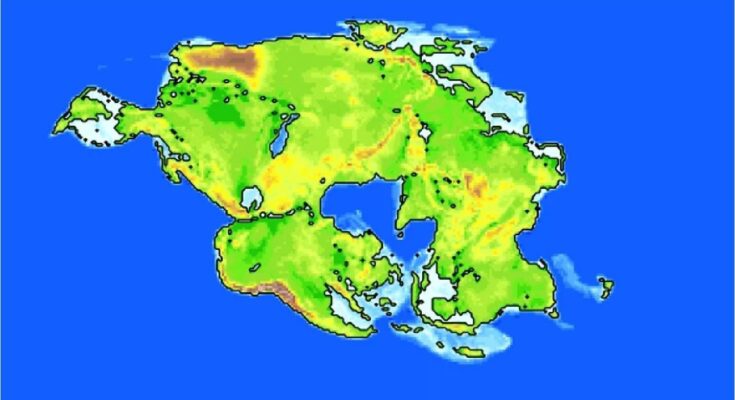Scientists using a supercomputer model have predicted that 250 million years from now, the continents will reunite into a supercontinent, dubbed Pangea Ultima, where life will be unbearable.
According to a study published recently in Nature Geoscience, the Earth will become unbearably hot, rendering much of the land uninhabitable and leading to mass land-mammal extinction.
The mass extinction would be caused primarily by heat stress as a result of greater volcanic activity that would put twice as much carbon dioxide into the atmosphere as current levels, an older sun that would emit more radiation, and the extent of inland deserts in the tropics.
Using a UK Met Office climate model and the University of Bristol supercomputer, the simulation also provided tectonic clues to past extinction events and data that could be of use to astronomers looking for other habitable planets.
Life unbearable on the Pangea Ultima supercontinent
In the era of Pangea Ultima, the temperature extremes are expected to be dramatic, with more humidity than now along the coasts and extremely arid conditions in the vast inland deserts.
In this world, global temperatures could increase by fifteen degrees Celsius (and up to thirty degrees Celsius on land) above pre-industrial levels, which would return the world to the extreme heat it last went through in the Permian–Triassic era about 260 million years ago, when more than ninety percent of species were eradicated.
Protracted periods of heat in excess of forty degrees Celsius would be beyond the tolerance levels of many life forms.
The paper’s lead author, Alexander Farnsworth, from the University of Bristol, said the prospect of another extinction event, which includes humans, was a sobering reminder of transience.
“The Earth has a very changeable environment,” he said. “Humans are very lucky with what we have now and we should not be pushing our own climate beyond the cooler climate that we evolved through. We are the dominant species but Earth and its climate decide how long that lasts.”
“What comes after is anyone’s guess,” he added. “The dominant species could be something completely new.”
Geologists on future supercontinent
The authors acknowledge their prediction has a high level of uncertainty due to the ultra-long-term timeframe, but they hope the study, which was initiated during the pandemic lockdown, will provide useful insights into past mass extinction events and possible habitability of other planets.
Geologists have long debated what the next supercontinent could actually look like. One theory, known as “Amasia,” is pretty much what it sounds like. The Americas will drift westward across the Pacific, smash into Asia, and take up residence near the North Pole.
Another school of thought predicts that the Americas, Africa, and Eurasia would instead squeeze out the Atlantic Ocean and reunite along the equator.
Pangea Ultima—first described in 2003 by the paleogeographer Christopher Scotese, another author of the new paper—would be the outcome of such a fusion.
Related: Supercontinent to Form in the Pacific in 200 Million Years



